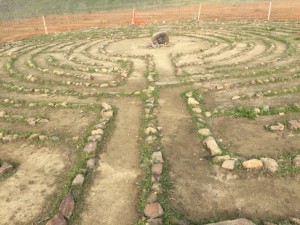By Kevin Nelson
Special to the Herald
Benicia is a port city, its identity and history defined by water. But it is also a city of hills, and the parks and open spaces in the hills provide rich recreational opportunities for hikers, families with strollers, dog-walkers, bicyclists, skateboarders and even fishermen.
One of the best of these hilly recreational open spaces is on Hastings Drive in the general neighborhood of Joe Henderson Elementary School. The entrance is almost hidden; as you’re coming up Hastings, it’s just beyond Brentwood Drive at the Village signs. (If you reach the Southampton firehouse, you’ve come too far.) Another way to spot it is the “giving tree” that a resident set up a few years ago.
Hanging from the branches of the tree are tags in which children and others have written short notes saying what they are thankful for. The tags are a bit in tatters due to age and the winter rains, but the tree stands at the gateway of an open space for which there is much to be grateful for.
Proceeding down the asphalt path through the opening in the fence, a squirrel or two will likely be scurrying around the live oaks there. Further down, an interesting and unlikely patch of desert cacti is spreading down the hill. To the left, in a gulley thick with trees and shrubs, that’s where the coyotes hang out.
A makeshift sign at the entrance warns you about the coyotes, and I have heard lurid tales about how the coyotes lure unsuspecting dogs into their shrubby lair, the poor dogs never to be seen again. Especially in summer around twilight, you may spot a coyote passing across the hills in search of food and water and you cannot walk the trails here without coming across their scat.
If you follow the path down the hill and up a small rise, a grove of eucalyptus trees beckons. Here, there is a homemade rope swing on a tree fit for kids and their game parents. From this point take the short trail up to the plateau where you will encounter a most unexpected attraction: a maze or labyrinth.
The labyrinth is not large, perhaps 20 paces across. It consists of hundreds of carefully placed rocks arranged in a series of steadily decreasing circles that lead to a central endpoint in the shape of a keyhole, where people have placed various offerings—coins, small toys, pictures, notes—like at a religious shrine. Indeed, the labyrinth does have a mystical quality; look at this area on Google maps and it resembles a tiny version of one of those mysterious farmland crop circles the likes of which are built, some say, by E.T. and his alien pals.
In this case, the Benicia labyrinth is not the work of aliens but an unknown resident—unknown to me, that is—who deserves great credit for a job well done. An incredible amount of inspired work, planning and intelligence went into its creation with its dead-ends, wrong turns and circular geometric shapes.
Another attraction is the pond on the far side of the plateau. It is nestled into the hillside and easy to miss, and you don’t want to do that. In summer when the hills turn brown and are starved for water, it acts as a kind of mini-oasis, surrounded by tule reeds and other greenery. Ducks float about and squawk, and the occasional coyote stops in for a happy hour drink. Teenagers drop lines in the water and fish, sometimes from inflatable rafts they carry down from the street.
There is an obvious and easy loop to walk around in this section, and then you can retrace your steps back up the path to Hastings and your car. The more ambitious may wish to keep following the main path down toward Rose Drive, or tackle one of the steep but short hiking trails on the hills. The hike with the best views is the big hill just beyond the pond. It is perhaps 150 yards to the top—moderately steep at the bottom with uncertain footing, then gradually leveling off as you climb higher.
Once you’re at the top, Mount Diablo is to the south and Mount St. Helena and Napa Valley are to the north. Close by are the Carquinez Strait and the bridge, Southampton Bay and the wetlands, the Benicia waterfront, and more of those hills and open spaces that help make the city what it is.







Leave a Reply